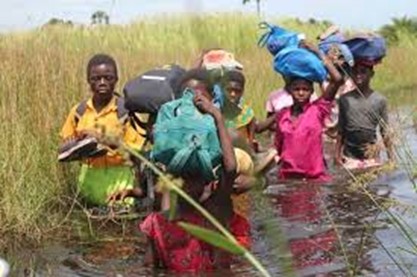The Ghana Education Service’s (GES) lack of a disaster-preparedness and response framework in the management of education at the pre-tertiary level has been identified as an impediment to academic work, especially in rural schools.
Ghana has made significant inroads with improving enrolment and gender parity at the basic and secondary levels; however, stark inequalities between urban and rural schools are often exacerbated by disasters because there is no structured, laid-down recovery process.
According to a recent report by the Africa Education Watch (Eduwatch), schools are exposed to multitudes of hazards which continually threaten students’ access to equitable education; and these hazards, if unaddressed, may exacerbate the consequences of larger disaster events in schools and their wider communities.
The report mentioned that beyond COVID-19, three notable disasters – fire outbreaks, poor school infrastructure and perennial flooding – have frequently posed serious threats to students but were handled haphazardly, leading to some school dropouts.
The Eduwatch Policy brief, authored by Eyram A. Agbe, revealed that for instance in the Central Region, a sample of 70 schools in the Cape Coast metropolis found only 10 percent of dormitories had emergency exit signs, and only 30 percent had fire extinguishers readily available.
“Fire outbreaks are prevalent in public Senior High Schools (SHS) across the country. In the first month of 2023 alone, a fire devastated three SHSs in the Upper West Region – with two outbreaks at the Wa Senior High Technical School occurring in a span of 24 hours. Existing research points to serious deficiencies in fire safety management at schools across the country,” she stated.
On the perennial flooding front, the report indicated that it is a significant hazard for Ghana’s education system – greatly affecting schools in rural and urban areas alike. Schools are often completely flooded during rainy seasons, making them no-go areas for teachers and students.
The current Akosombo Dam spillage exercise in the southern sector has affected over 70 basic schools; and Bagre Dam spillage activities in the northern sector have also posed a longstanding risk to students, because they miss school due to continual evacuations.
“This is the case for students who live along the White Volta River, who experience flooding and evacuation annually due to Bagre Dam spillages. Students in informal settlements across the country are particularly vulnerable to the impact of flooding, as their communities’ infrastructure suffers from disputes between city development officials and residents.
The poor school infrastructure menace has been a long-standing and keeps getting worse annually. There are currently over 5,400 schools existing under trees and dilapidated structures in Ghana, despite interventions such as the Schools Under Trees and Emergency Interventions programmes.
Ensuring Equitable Education in Disasters
Across these three major hazards relevant to Ghana’s education system, certain issues prevail. For one, school development occurs in silos because schools are not seen as part of the communities where they are located.
Capping the Ghana Education Trust Fund (GETFund) – which is the main source of funding for education infrastructure, presents a worrying reality for Ghana’s disaster risk management in education. With limited funding for the maintenance and construction of new school blocks, schools are less prepared to handle disasters – and pupils are more likely to fall through the cracks upon re-entry/reopening.
A model for equitable education in disasters
A disaster management framework that integrates guiding principles for robust approaches to education including grassroots resilience, evidence-based responsiveness, reflexive curriculum design and holistic child-centred well-being is required to address the challenge.
Ghana’s disaster risk profile is well-documented. What’s less investigated is sustaining communities and school systems through disasters, to ensure that vulnerable students remain at the centre of education programming.
Among others, the report recommended that the GES implement an Education in Emergency Plan (EEP) in all districts to enhance education on disaster-preparedness.
Additionally, the Ministry of Education, GES, and National Disaster Management Organisation must work closely to develop a disaster data reporting and response system for schools and their communities. Data collected should be open source to allow Civil Society Organisations and the general public to better understand the nuances of disasters in Ghana’s education system.










